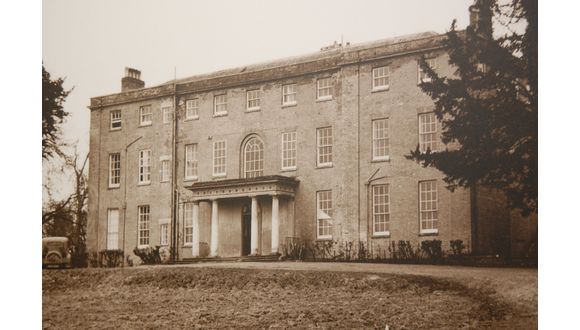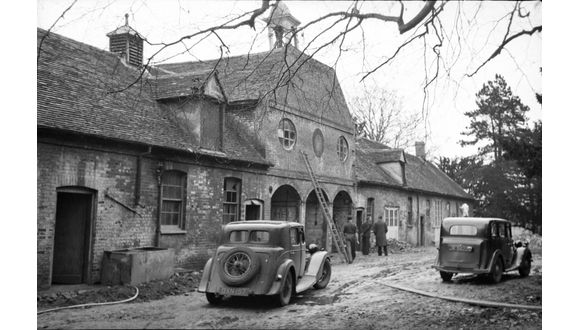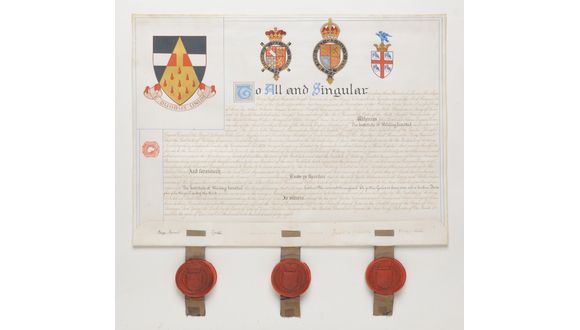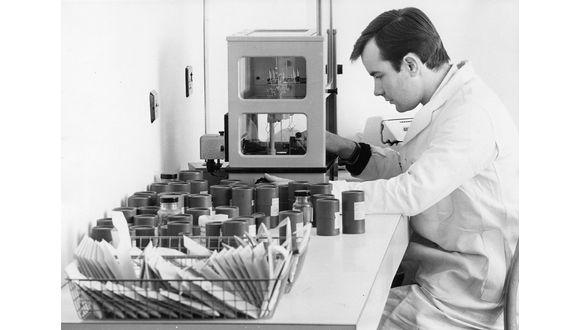Mon, 11 January, 2021
2021 marks the 75th anniversary of The Welding Institute and the purchase of Abington Hall near Cambridge, upon whose grounds TWI Ltd now exists.
While 1946 was an instrumental year for the formation of today’s Institute (and subsequently TWI Ltd), the roots of the Institute actually go back to the creation of The Institution of Welding Engineers, which was formed in London in 1923.
The idea for The Institution of Welding Engineers was sparked when a group of 20 men gathered at the Holborn Restaurant in London on 26 January 1922. They decided to establish an association to unite acetylene welders with those interested in electric arc welding. This idea came to fruition in February 1923 when The Institution of Welding Engineers was registered under the Companies Act.
The aim of the Institute was to:
“Advance and develop the science and practice of welding; to arrange for the reading of papers and lectures; to draw up regulations and recommendations for the guidance of the welding industry; to establish branches and acquire libraries; to promote legislation and establish welding schools; and generally to take steps that may appear desirable to develop the science of welding in all its branches.”
The next ten years saw the income of the Institute grow to £800 per annum with the number of Members reaching 600.
In 1935, the British Advisory Welding Council merged with The Institution of Welding Engineers to form The Institute of Welding. This was important to the later creation of TWI Ltd as it took the scope of the Institute beyond personal professional membership to also include companies (now known as Industrial Members) in order to further support research activities. The new Institute determined to:
“Undertake a wider and more comprehensive programme of work, and to meet the pressing demands of all branches of engineering for guidance in welding matters.”
Despite the merger of 1935, it wasn’t until two years later that the research-based focus of the Institute began to take hold with the creation of The Welding Research Council in 1937. The Council was designed to provide:
“Status and recognition for the valuable work of the research committees and the standing of their personnel.”
The research aims of the Institute gained a further boost when the Department of Scientific and Industrial Research awarded a three-year grant to fund welding research.
At this point, the Institute didn’t have its own laboratories and so work was primarily supported by UK universities, in what can be seen as a parallel to today’s Innovation Network.
 Abington Hall (1938)
Abington Hall (1938)
The debarring of professional institutions from acting as research associations forced the two arms of the Institute to split in 1946, leading to the creation of the British Welding Research Association (BWRA) as a separate entity to The Institute of Welding.
This same year saw the BWRA buy Abington Hall near Cambridge for £3850, with Allan Ramsay Moon becoming the first Director of Research. This is still the site of the headquarters of TWI Ltd and The Welding Institute today. However, the operation was much smaller back in 1946, with the first welding shop being established in stables adjoining the Hall and fatigue research beginning in a former army hut under the guidance of Dr Richard Weck.
 The stables, where the first welding shop was located
The stables, where the first welding shop was located
At this time, the BWRA also owned 29 Park Crescent, London, which was converted into a metallurgical laboratory. The butler’s pantry at Park Crescent was used as the polishing room and the machine shop was situated in the coachman’s quarters.
Ramsay Moon, disillusioned with the small £30,000 grant from the Department of Scientific and Industrial Research, left after just one year and the responsibility to grow the organisation then fell to Dr Harry Taylor.
 The Welding Institute Grant of Arms
The Welding Institute Grant of Arms
The Institute celebrated its silver jubilee with the award of a Grant of Arms by the College of Arms. The coat of arms depicts a joint being made through the application of heat with a Latin motto that translates as ‘out of two, one.’
The Institute of Welding established the School of Welding Technology in response to an overwhelming demand for courses on welding design and construction. The first course, on the welding of pressure vessels, saw nearly 100 applicants for the 40 places. The expanding training programme was run at a property in London close to the Imperial College of Science and Technology in what is a clear forerunner to today’s TWI Training.
1957 also saw Richard Weck become the Director of the BWRA, where he ensured that advances in welding methods, metallurgy and engineering research continued apace.
In 1965, the BWRA and the Non-Destructive Testing Society of Great Britain came together to form the School of Applied Non-Destructive Testing, which pioneered formal training in areas such as ultrasonic weld testing and radiographic interpretation – subjects that can still be studied at TWI today.
This collaborative work led to the BWRA and the Non-Destructive Testing Society of Great Britain preparing the requirements for the certification of personnel, becoming the foundation of CSWIP, the Certification Scheme for Welding and Inspection Personnel and TWI Certification.
 At work in the 1960s
At work in the 1960s
The merger of The Institute of Welding and the BWRA occurred in 1968 following the realisation that their complementary activities would serve industry better as “a single voice for welding technology.”
This merger created The Welding Institute in March of 1968 after the successor to the Department of Scientific and Industrial Research, the Ministry of Technology, saw no reason to object.
These earliest years were the foundation of The Welding Institute and what would later become TWI Ltd, as well as the many other subsidiaries, including the National Structural Integrity Research Centre (NSIRC). NSIRC is a state-of-the-art postgraduate engineering facility that unites academia with industry to address the need from industry for fundamental research while also creating the next generation of highly skilled engineers and scientists.
TWI has gone on to expand across the UK, opening offices and laboratories in Middlesbrough, Aberdeen, Port Talbot and the Advanced Manufacturing Park, South Yorkshire, as well as gaining a presence around the world including in North America, China, Southeast Asia, India and the Middle East.
The overseas centres have made TWI the largest provider of welding technology and inspection related training for both individuals and companies; providing training to over 20,000 people per year and further expanding our work to promote and advance engineering across the world.
We will continue to present articles celebrating the 75th anniversary of TWI throughout 2021, including interviews with some of the influential people who helped to grow the organisation over the years.